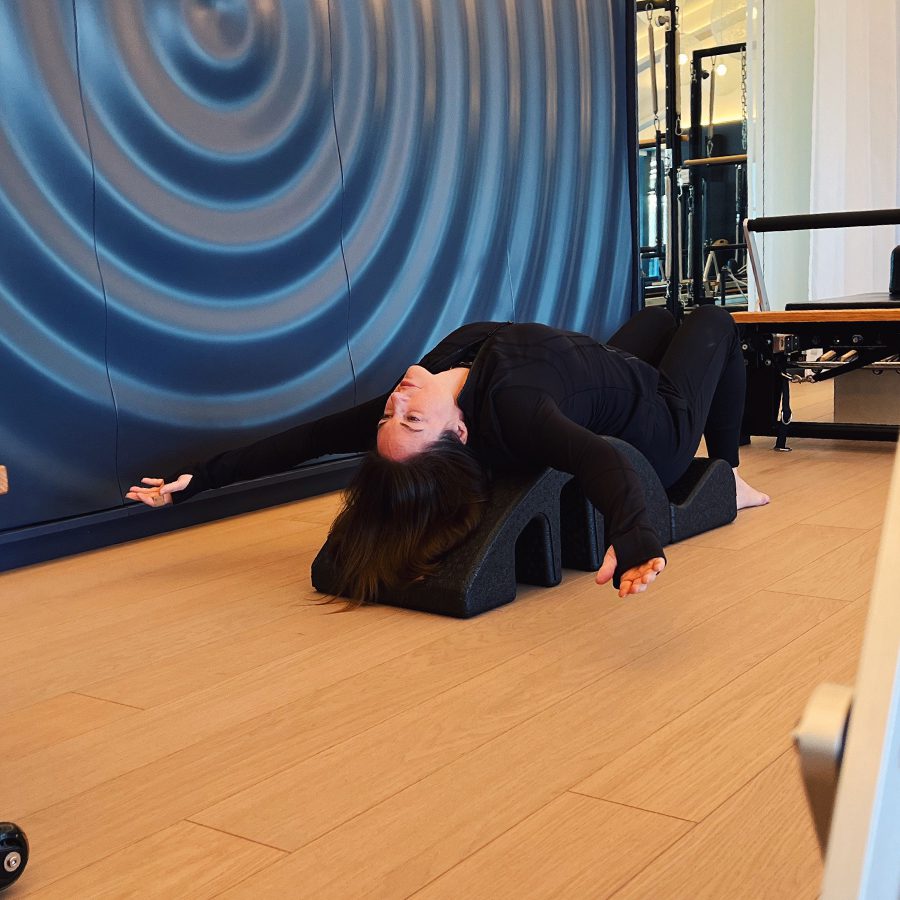Most people think of Pilates for toning abs and creating strong, lean muscles. But Pilates actually has its roots in rehabilitation. The founder, Joseph Pilates, started attaching springs and pulleys to the bed of injured World War I soldiers. These tools allowed them to get stronger and increase their range of motion before they got out of bed and put weight on their joints. Over the years, the original Pilates equipment Joseph created has evolved into what we use in our Pilates Studio at Woodside today: the Reformer, Cadillac, Chair and Barrel.
Surgeons and physical therapists often recommend clients include Pilates Reformer exercises in recovery from a knee injury, hip replacement, shoulder surgery and more. But you don’t need to be suffering from a serious injury to find benefit and relief from this method of exercise. Is your neck stiff from leaning forward and staring into a computer screen? Is your back tweaked from a new exercise you’ve taken up? Are you worried that your knees aren’t ready for the long distance run you are training for? If any of these are true for you, Pilates may be a useful addition to your wellness routine.
The principles of Pilates address muscular imbalances, which can be the cause of many injuries. By focusing on unilateral movements, exercising one side of the body at a time, Pilates helps develop muscular structure. Pilates Trainers work with clients to identify imbalances and correct form. When you train privately, you’ll be guided through exercises to correct discrepancies in strength that can help deal with a current injury and help lessen the chance of incurring another injury later on.
Another common cause of pain is poor posture, which Pilates is known for improving. Many of us suffer from a hunched over posture after being slumped at our computers. Being seated all day means that your hip flexors become shortened, and your glutes and abdominals become weaker. The forward head position also compromises your neck. All of this can leave your spine, hips and knees more vulnerable to pain and injury.
Pilates can also help restore normal muscle function. This is particularly important when it comes to activating the deep stabilizer muscles that often stop firing properly after an injury. Pain caused by injury can prevent these muscles from functioning properly. Even after the pain subsides, these stabilizers can stay switched off. The deep stabilizers around your pelvis and spine, for example, play a vital role in preventing injury and relieving back pain. If they aren’t firing properly, Pilates is an effective method for bringing them back online.

WHAT KIND OF PILATES PROGRAM MAKES SENSE FOR YOU?
If you have some minor tweaks and discomfort, signing up for Group Reformer or Tower class on a regular basis may be an effective way to improve your posture, relieve stiffness and cross-train for other activities. There are 9 classes per week that you can sign up for in the Woodside app. Sign-ups open 48 hours prior to class time.
If you are recovering from a more acute concern, have a specific goal in mind or you’re new to Pilates scheduling a one-on-one consultation to talk about your needs and assess your movement patterns is the first step to understanding where your imbalances exist. From there, you can begin an exercise program to improve those imbalances that will help you avoid worsening your symptoms. You’ll work on movements that are personally designed to help heal your injury, which can speed up your recovery.
To book a Pilates consultation, email Pilates Trainer Carrie Coleman.


